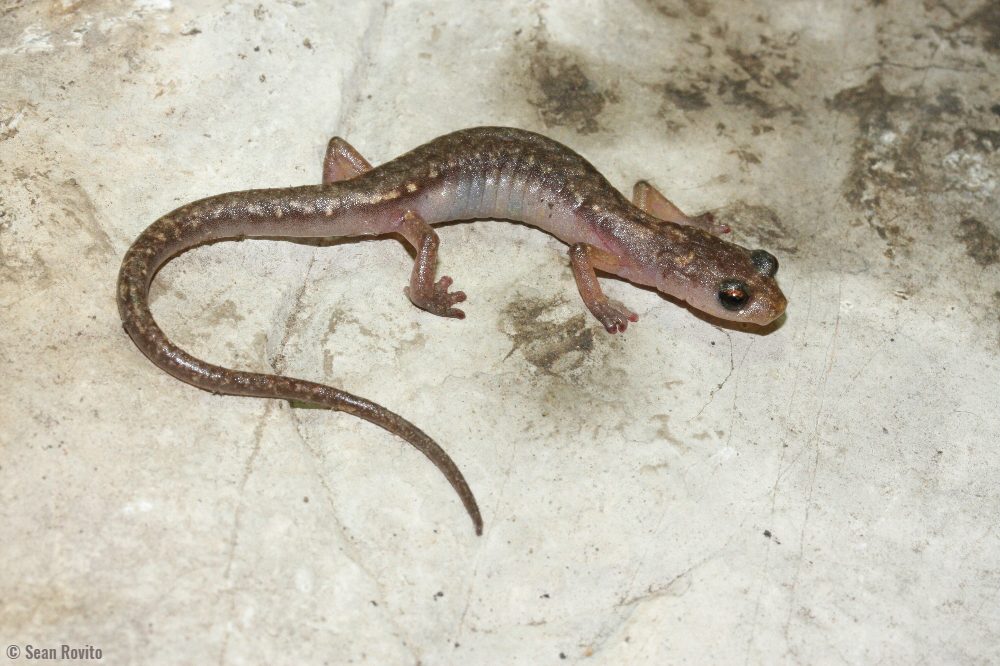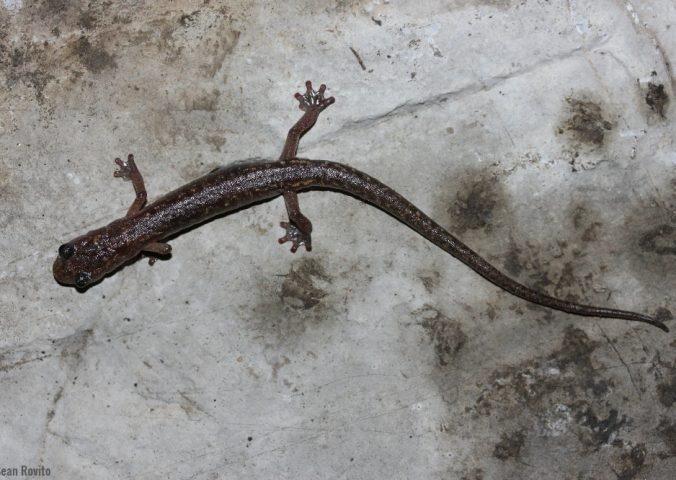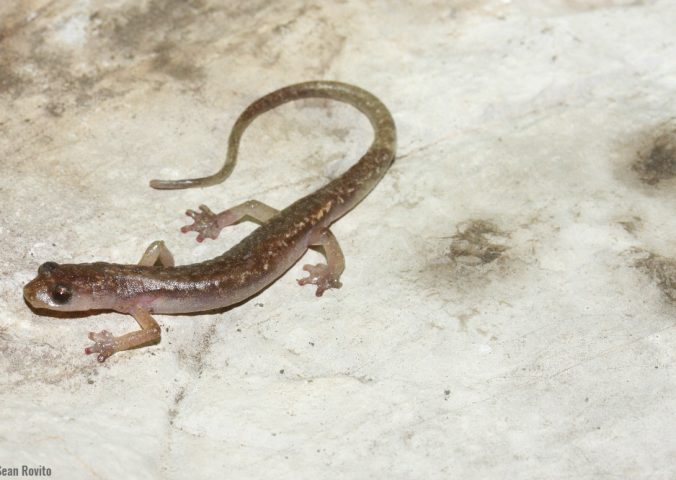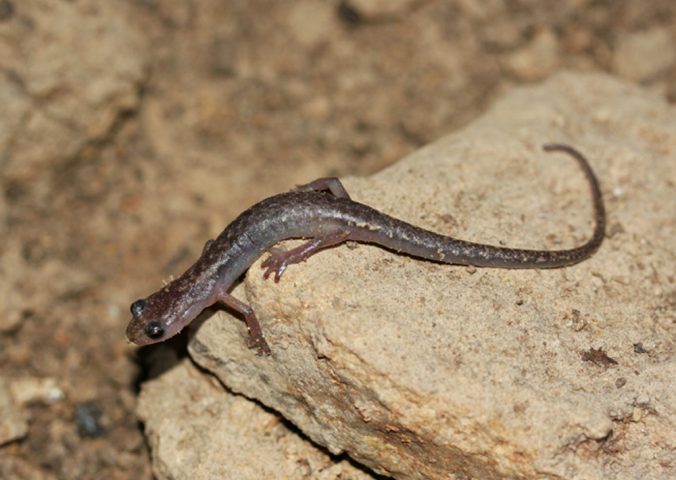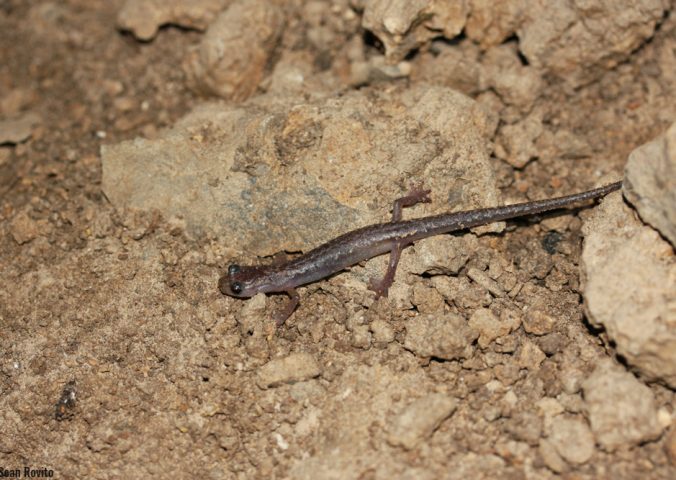About
The Critically Endangered cave splayfoot salamander had not been seen for 73 years before its rediscovery in 2010!
The species no longer occurs in the area in which it was originally discovered, which is a cave near Durango town, Mexico. The area has become uninhabitable due to pollution and desiccation as a result of forest clearance and the original cave is now filled with rubbish.
This species is part of the Plethodontidae, the largest salamander family, comprising almost two thirds of all known species. They are thought to have diverged from all other amphibian species over 100 million years ago, in the Early Cretaceous. They are as distantly related to all other amphibian lineages as humans are to elephants, and emerged when dinosaurs still roamed the Earth!
This species has the remarkable ability of caudal (tail) autotomy; the ability to drop the end of their tail and later regrow it, which is used as a defensive escape method. Cave splayfoot salamanders are found crawling about on damp cave walls in near-total darkness.
The remaining forests around the caves where this species survives are under intense pressure from agricultural expansion and wood extraction. The cave splayfoot salamander could exist in other caves in Parque Nacional Los Mármoles, therefore further cave exploration is needed to determine the extent of this species. This species is protected by Mexican law, under the “Special Protection” Category.
- Order: Caudata
- Family: Plethodontidae
- Population: Extremely rare
- Trend: unknown
- Size: 100mm
EDGE Score
Distribution
This species was found within the Parque Nacional Los Mármoles, northern Hidalgo, Mexico, at 2,160 metres above sea level.
Habitat and Ecology
This species is a crevice dweller that requires humid caverns in pine-oak forest. Direct development of young occurs within the egg as the young hatch as miniature adults. The whole reproduction process is independent of water as eggs are laid in damp locations on the land, making this a truly terrestrial species.
